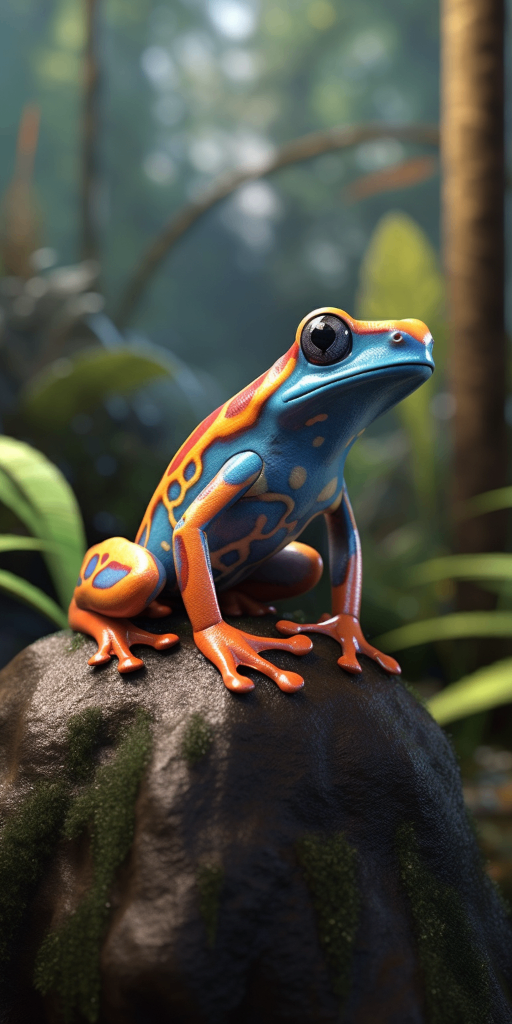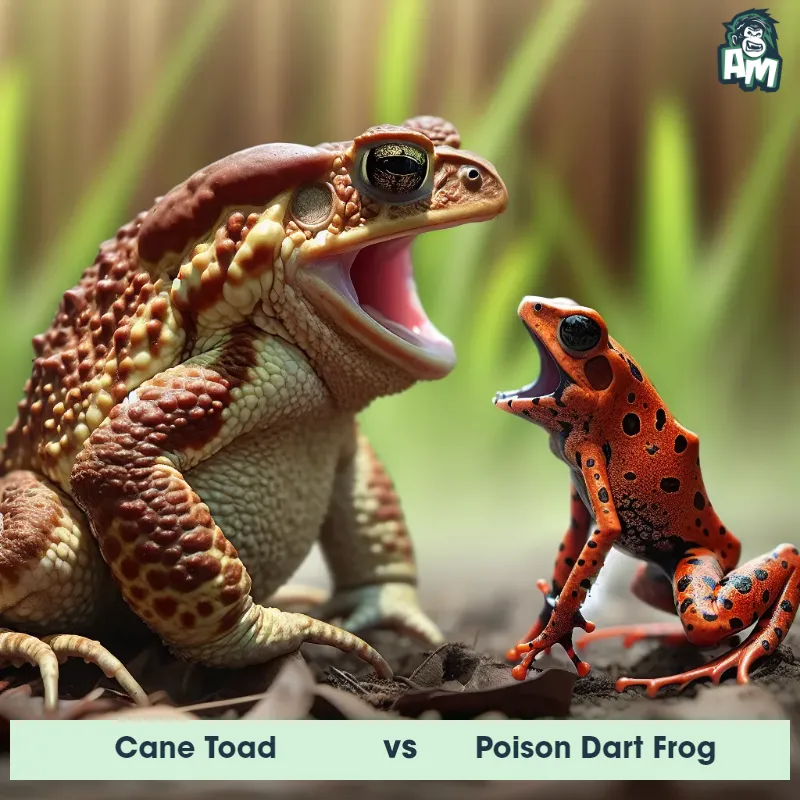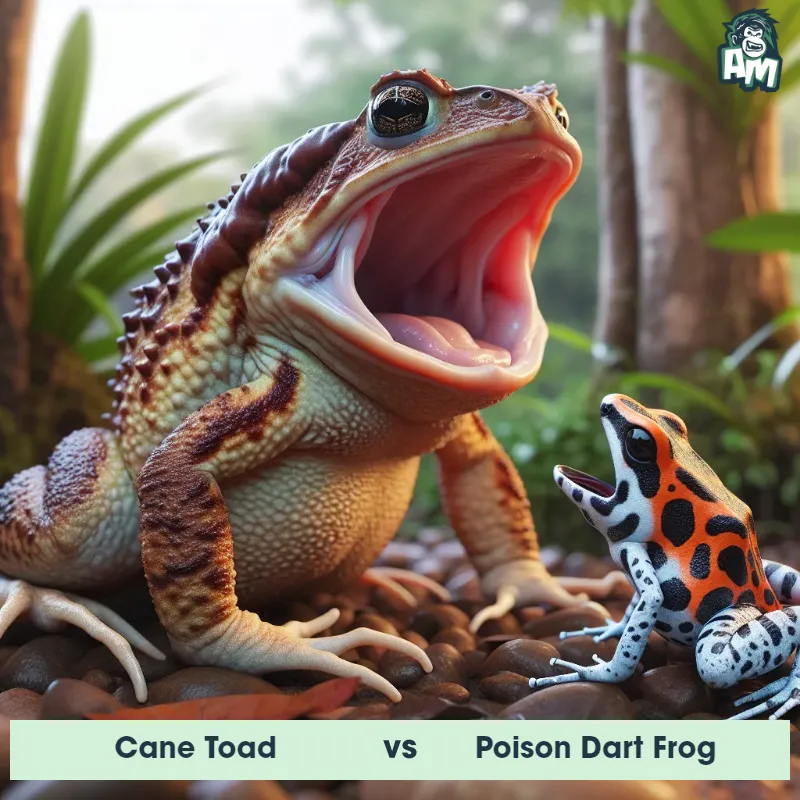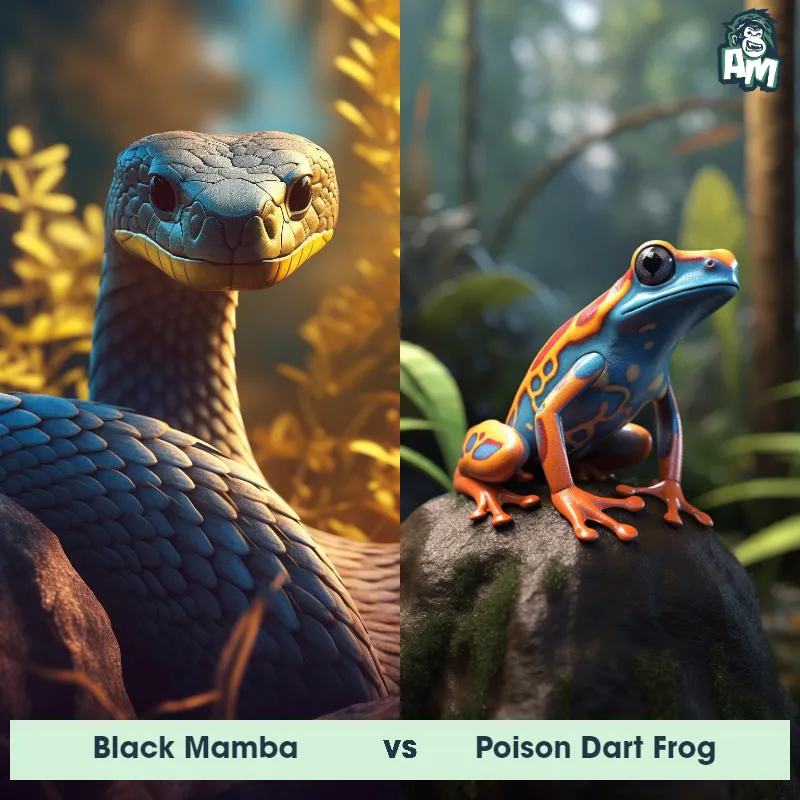The Poison Dart Frog
The Poison Dart Frog, also known as the dart-poison frog or poison arrow frog, is a small, brightly colored amphibian found in Central and South America. They are known for their toxic skin secretions, which act as a defense mechanism against predators. These frogs are usually no more than 2 inches long and come in a variety of vibrant colors and patterns. Their small size and striking appearance make them a popular subject for wildlife photography and research.

| Poison Dart Frog | |
|---|---|
| Size | Less than 2 inches (5.1 cm) |
| Weight | Less than 1 ounce (28 grams) |
| Speed | Speed: 0.5 mph (0.8 km/hr) |
| Key Strength | Toxic skin secretions |
| Biggest Weakness | Small size and lack of physical strength |
| Scientific Name | Dendrobatidae |
| Family | Dendrobatidae |
| Habitat | Tropical rainforests |
| Geography | Central and South America |
| Diet | Insects and other small invertebrates |
| Lifespan | 1 year - 15 years |

The Poison Dart Frog
The Poison Dart Frog, also known as the dart-poison frog or poison arrow frog, is a small, brightly colored amphibian found in Central and South America. They are known for their toxic skin secretions, which act as a defense mechanism against predators. These frogs are usually no more than 2 inches long and come in a variety of vibrant colors and patterns. Their small size and striking appearance make them a popular subject for wildlife photography and research.
Fun Fact: The Poison Dart Frog gets its name from indigenous tribes who would use the frog's toxic secretions to poison their blowgun darts when hunting, as the toxins can paralyze or kill small prey.
| Poison Dart Frog | |
|---|---|
| Size | Less than 2 inches (5.1 cm) |
| Weight | Less than 1 ounce (28 grams) |
| Speed | Speed: 0.5 mph (0.8 km/hr) |
| Key Strength | Toxic skin secretions |
| Biggest Weakness | Small size and lack of physical strength |
| Scientific Name | Dendrobatidae |
| Family | Dendrobatidae |
| Habitat | Tropical rainforests |
| Geography | Central and South America |
| Diet | Insects and other small invertebrates |
| Lifespan | 1 year - 15 years |
Match Highlights
Poison Dart Frog Matchups
We use AI to simulate matchups between the Poison Dart Frog and other animals. Our simulation considers size, strength, and natural predatory behaviors to determine the most likely outcome.
Poison Dart Frog: Diet, Predators, Aggression, and Defensive Behaviors
What do Poison Dart Frogs eat?
Poison Dart Frogs primarily feed on insects such as ants, termites, beetles, and mites. Their diet may also include spiders and small invertebrates found in their habitat. These frogs have a long, sticky tongue that they use to catch and consume their prey. They are known to have a varied diet based on the availability of food in their surroundings.
Do Poison Dart Frogs have any predators?
Despite their toxic skin secretions, Poison Dart Frogs still have predators in the wild. Some of their main predators include snakes, birds, mammals, and certain invertebrates. Predators that rely on sight, smell, or other senses to find prey are often deterred by the brightly colored skin of Poison Dart Frogs, which serves as a warning sign of their toxicity.
Are Poison Dart Frogs aggressive?
Poison Dart Frogs are not naturally aggressive towards humans or other animals. In fact, they are known for their shy and reclusive behavior in the wild. These frogs would rather flee than confront a threat, as they rely on their toxic skin secretions as a defense mechanism. However, they may become defensive if they feel threatened or cornered.
Do Poison Dart Frogs fight?
Poison Dart Frogs do not engage in physical fights with one another or with other animals. Instead, they use their toxic skin secretions as a deterrent to predators or threats. These frogs prefer to avoid confrontation and rely on their bright colors to signal their toxicity and protect themselves from harm.
How do Poison Dart Frogs defend themselves?
Poison Dart Frogs defend themselves from predators using their skin secretions, which contain potent toxins that can be harmful or potentially deadly to predators. These toxins are acquired from the insects they consume in their diet. When threatened, Poison Dart Frogs will release their toxins as a defense mechanism, deterring predators from attacking them.
What is the biggest weakness of Poison Dart Frogs in a fight?
The biggest weakness of Poison Dart Frogs in a fight is their small size and delicate nature. Despite their toxic skin secretions, these frogs are relatively small and vulnerable to larger predators. While their toxins serve as a potent defense mechanism, Poison Dart Frogs can still fall prey to predators that are able to bypass their colorful warning signs and consume them.
Fun Fact: One interesting adaptation of the Poison Dart Frog is its bright coloration, which serves as a warning to potential predators that they are toxic and should not be ingested.
Fun Fact: The Poison Dart Frog is an excellent parent - the male frog will guard the eggs and transport tadpoles on his back to a water source for them to develop, ensuring their survival and increasing their chances of reaching adulthood.




























